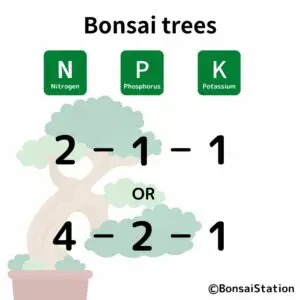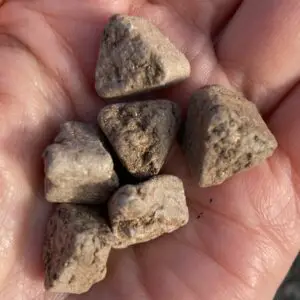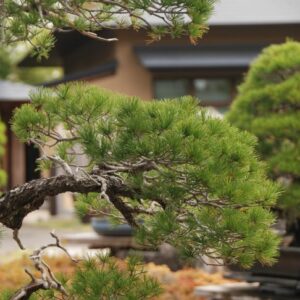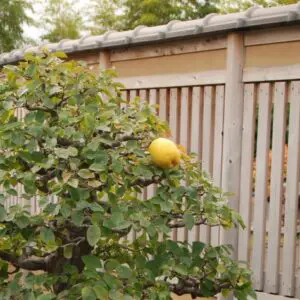There are three methods for fertilizing bonsai trees: 1) adding organic matter to the soil, 2) top dressing with solid fertilizer, and 3) using liquid fertilizer as needed. To achieve optimal growth and health, it is recommended to use a combination of all these methods.
Bonsai nutrition and fertilizer types
Nutritional Needs of Bonsai Trees
Bonsai trees, like all plants, require a variety of nutrients for optimal growth and development. There are 17 essential nutrients that all plants need to grow, of which the following 3 are needed in larger amounts and play a key role in bonsai trees growth:
- Nitrogen (N) for leaf growth
- Phosphorus (P) for energy transfer
- Potassium (K) for overall health and disease resistance

Bonsai Trees NPK ratio
The basic formula for bonsai fertilizer, common for all species, is an NPK ratio of 2-1-1 or 4-2-1, emphasizing the nitrogen ratio for leaf growth.
Note that different species have different nutritional needs.
For example, flower and fruit bonsai trees require an increased ratio of phosphorus/ potassium and decreased levels of nitrogen in fertilizer when they are developing flower buds (and fruit). An N-P-K ratio of 10-10-10 will give balanced growth for most flowering/fruit bonsai trees.
For more detailed information on bonsai nutrient needs, please check the following post.
Bonsai fertilizer types
There are a few different types of fertilizers available for bonsai trees. These can be categorized based on their origin (organic/inorganic), release rate (fast/slow), and form (solid/liquid).
Among these, choosing slow-release fertilizers is crucial for bonsai fertilization. Both inorganic and organic fertilizers can be used as long as they are slow-release, and solid fertilizers are better for bonsai trees.
If you are interested in knowing why this type of fertilizer is good for bonsai trees, the following post might be helpful.
A Step-by-Step Guide to bonsai fertilization
Fertilization application methods
There are the following 3 ways to apply fertilizers to bonsai trees:
- Incorporating organic matter into the soil,
- Top dressing solid fertilizers to the surface of the soil, and
- Applying a liquid fertilizer (if and when necessary).
These methods have different objectives and you should incorporate all these for the healthy and maximum growth of our bonsai trees.
Why organic matter

Incorporating organic compost in the soil is a good way to give basic nutrients to your bonsai trees, especially for deciduous, flowering, and fruit bonsai trees. This will give them a baseline of energy they need even when you failed to feed them enough.
It should be noted, though, that mixing a large amount of organic matter into the soil is not recommended due to the risk of overgrowth, over-fertilization, and of the soil becoming too moist and less drained.
Vigorous growth is good for most houseplants but not always for bonsai trees. If they grow too vigorously, it is hard to make or keep them small with the shape you want. So, controlling the growth of the trees by cutting the nutrients in the soil is a priority rather than making nutrients always available in the soil for the trees to take in.
Why solid and liquid fertilizers

Bonsai solid fertilizer
Why the combination of solid and liquid fertilizer?
The nutrients deficient in the soil for your bonsai trees to grow will be given periodically by a combination of solid and liquid fertilizers.
Using slow-release solid fertilizers aims to provide a steady supply of nutrients to the trees throughout the growing season. Liquid fertilizers, on the other hand, provide a quick boost of nutrients to the trees, to supplement the nutrients needed and help support healthy growth and development.
Flowering and fruit bonsai trees
For flowering and fruit bonsai trees, using a liquid fertilizer with an NPK ratio of 10-10-10 to boost blossoming and bearing fruit, along with slow-release fertilizer with a higher N ratio (2-1-1), can be beneficial.
The logic behind this approach is that there can be negative side effects to using a higher ratio of phosphorus (P) and potassium (K) fertilizer throughout the growing season. An excessive level of P and K interferes with the uptake and availability of other essential nutrients, especially when the soil already has adequate levels of these nutrients.
So, using a regular application of a higher N solid fertilizer as baseline nutrients in conjunction with a liquid fertilizer with a higher ratio of P and K may be a better approach to ensure adequate nutrition for both vegetative growth and flower/fruit development.
Incorporating organic matter
Mix organic compost in the bonsai soil mix when repotting. Organic compost is used to make nutrients available to trees that require relatively abundant nutrients such as flower and fruit bonsai trees.
The basic soil mix ratio for bonsai trees by species is as follows.
Basic soil mix by species
| Coniferous | Deciduous | Flower/fruit | |
| Akadama/ Lava rock |
60% | 70% | 60% |
| River sand/ Pumice |
40% | 20% | 20% |
| Organic compost |
– | 10% | 20% |
Note that organic potting compost should never be used alone or in high proportion in the bonsai soil mix. Organic matter makes the soil always wet and also makes it difficult to control trees’ growth to shape and keep the style you want.
So, if you are buying a ready-to-use bonsai soil mix, make sure to check the percentage of organic matter in it. If the one you have or are buying contains a higher proportion of organic matter, the application of other fertilizers should be adjusted accordingly.
Applying solid and liquid fertilizers
Step 1: Choose appropriate fertilizers
Select a slow-release fertilizer with an NPK ratio of 2-1-1 or 4-2-1. Both inorganic and organic options can work well, but if you were to choose an inorganic one, be sure to choose the one labeled “slow-release” or “controlled-release”. Solid fertilizers can be granular or pellets but small granular may dissolve much quicker.
For flowering and fruit bonsai trees, choose a liquid fertilizer with an NPK ratio of 10-10-10.
Step 2: Schedule fertilization for the year
Coniferous and deciduous trees

It is recommended to fertilize bonsai trees during the active growing season and the storing of energy season, which is spring and fall.
One way to schedule fertilization is to apply a slow-release solid fertilizer from the beginning of spring between 4 to 6 weeks apart (except during hot summer). Then, throughout the growing season, you can apply a liquid fertilizer once or twice a month if necessary.
Flowering and fruiting trees

Chinese quince fruit
Scheduling the fertilizer application of flowering and fruit bonsai trees can be tricky. With excess nutrients, including nitrogen, there can be no flowers or fruits because trees will use the surplus energy on growing the foliage rather than diverting these resources to reproduction.
Because of this, there are certain periods when you should avoid fertilizing to develop flower buds and fruiting besides using higher P and K fertilizers. Those periods are:
- Just before and during flowering;
- When forming flower buds (normally in summer); and
- Just after bearing fruits until they grow to a certain extent.
Other things to consider when scheduling
Note that nutrient needs vary among different species of bonsai trees. Those that grow naturally in fertile soil need a lot of fertilizer frequently, while trees that live in poor soil do not need much.
So, the nutrient needs of a specific species of bonsai trees should also be taken into account.
Also, you have to avoid fertilizing when your bonsai trees are stressed somehow, because of the weather, repotting, or wiring, for instance.
Be sure to follow the instructions on the fertilizer packaging as well for the recommended application rate.
By taking all these factors into consideration, you can schedule fertilizing your bonsai tree for the year.
Scheduling fertilization for your bonsai tree varies depending on the species of tree, the growing conditions, and the stage of growth. For more about how to schedule fertilization for a specific tree, please check the following post.
Step3: Apply solid fertilizer

Bonsai solid fertilizer
Top dressing with solid fertilizer is a method of applying fertilizer to the surface of the soil of your bonsai tree. Here is a step-by-step guide for top-dressing your bonsai tree with solid fertilizer.
- Measure the appropriate amount of fertilizer according to the label.
- Scatter/place the fertilizer towards the rim of the pot, avoiding the surface root area.
- Read the instruction and when necessary, use a small hand rake or chopstick to gently incorporate the fertilizer into the top layer of soil. Avoid doing this if the pot is filled with roots. Roots may be burned if fertilizers touch them directly.
- Water the trees thoroughly to help the fertilizer penetrate the soil.
- Monitor the nutrient levels of the soil regularly and make adjustments to the amount of fertilizer used as necessary.
Step 4: Apply liquid fertilizer
Here is a step-by-step guide for applying liquid fertilizer to your bonsai tree.
- Mix the liquid fertilizer with water according to the instructions. The ratio will vary depending on the type of fertilizer and the stage of growth of your plants but make it twice the labeled dilution to avoid overfertilization.
- Water the soil with plain water to create a moist environment that will help the fertilizer soak in.
- Then, evenly pour the diluted fertilizer solution over the soil. Be careful not to apply it on the leaves, as this can leave unwanted leaf spots.
- After applying the fertilizer, water the trees again with plain water to help distribute the fertilizer evenly in the soil.
Monitoring and adjusting fertilization
Properly fertilizing your bonsai trees is an ongoing process that requires regular monitoring and adjusting. You can easily over- or under-fertilize your trees as they are growing in a very small amount of soil.
Here are some steps to take to ensure your fertilization methods are working effectively.
Monitor and adjust
Keep an eye on the growth and development of your bonsai trees on a daily basis. Look for signs of unhealthy growth such as yellowing leaves, leaves falling off or blacked roots. If you notice these signs, adjust your fertilization methods as needed.
Fix the issues
You also have to remedy issues arising from fertilization application. When over-fertilized, flush out the excess nutrients from the soil by watering abundantly. When under-fertilized, change the fertilizer or increase the frequency of application.
Note that many of the symptoms of leaf color change, leaf growth deformities, and root color/growth malformation can be indicative of both over-fertilization and under-fertilization. Make sure to determine the cause of your trees’ problems before trying to fix them.
For more detailed information on how to monitor, adjust and fix bonsai trees’ over- or under-fertilization, the following post might be helpful.



